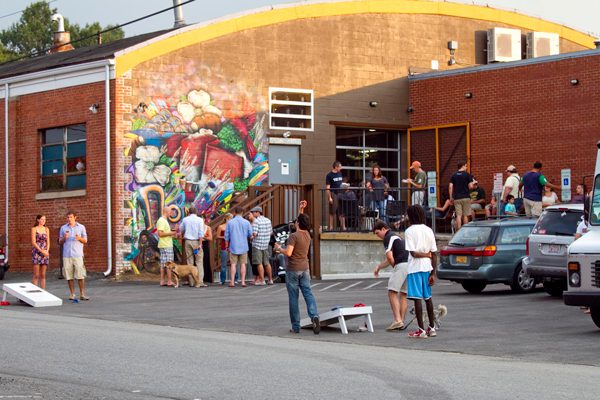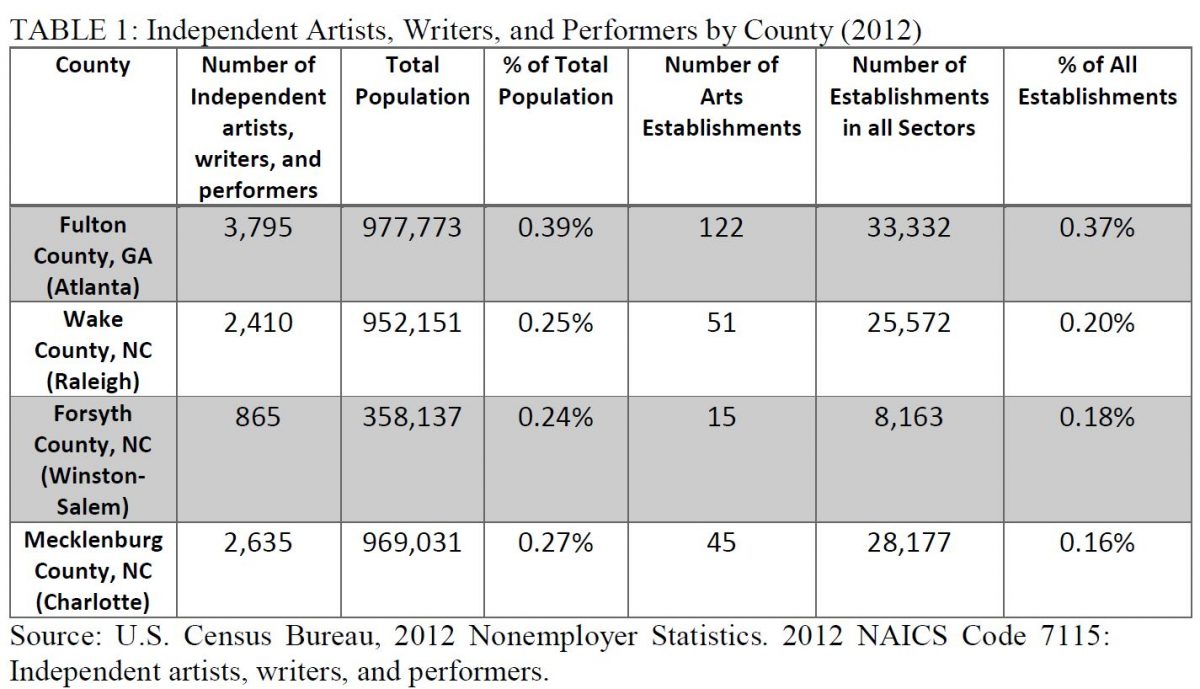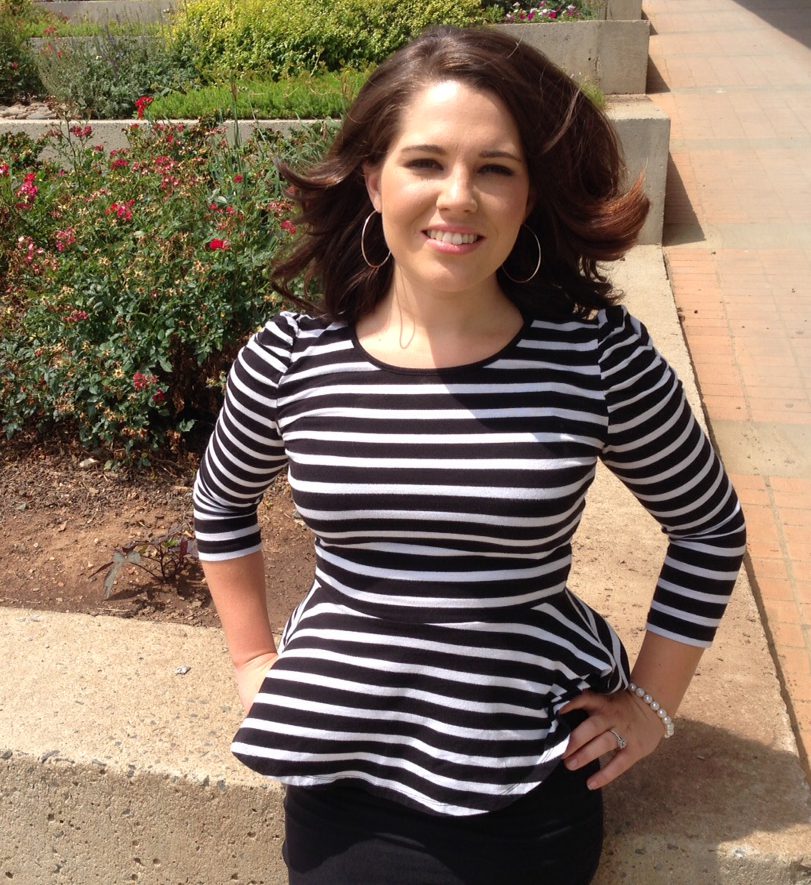Charlotte arts districts face challenges, study finds

Since the 1990s, the NoDa neighborhood surrounding North Davidson and 36th streets in Charlotte has been branded as the city’s arts district. But in recent years the galleries that once clustered there have dwindled. Is NoDa still an arts district? Or has South End, along South Boulevard near uptown, overtaken it?
Morgan Hamer, an artist and geography graduate student at UNC Charlotte, decided to study the city’s arts clusters: How many exist, and where? Do they have factors in common? For her master’s thesis, Hamer took a deeper look at Charlotte’s arts districts. Compared to some other cities, she found, Charlotte lags in the number of arts establishments. Another conclusion – that galleries need to be accessible to affluent clients – points to a key difference between South End and NoDa.
PlanCharlotte.org’s Mary Newsom interviewed Hamer about her research and its possible significance for the future of Charlotte’s visual arts scene. The interview, edited:
What factors did you look at in doing this analysis?
First, I identified and confirmed locations of art galleries (but not museums) and studios in Mecklenburg County. They were selected to represent locations of visual artists, because their primary function is producing and displaying artwork. Then I determined which neighborhoods have the highest clusters of those art establishments. The two neighborhoods with the greatest concentrations were NoDa and Sound End/Dilworth.
Next, I did a statistical analysis, comparing neighborhood variables associated with arts communities in other cities to those in Charlotte’s arts neighborhoods. Because of the small number of arts establishments here, I included qualitative research – interviews and referencing local arts publications.
How does Charlotte compare with other cities in the vitality of its artists’ neighborhoods?
In terms of artists per population, Charlotte is in line with Raleigh-Wake County, and Winston-Salem-Forsyth County. However, Charlotte’s artists-per-population is lower than Atlanta-Fulton County. As for the number of arts establishments compared to the total number of business establishments, Charlotte is lowest among the four counties.

What did your analysis show about how the Charlotte arts neighborhoods compare to artist neighborhoods in other cities?
Charlotte, for the most part, lined up with elsewhere: Artist neighborhoods tend to be younger, with more adults with bachelor’s degrees, and the housing and amenities are more urban – more public parks, more sidewalks, very walkable, bicycle-friendly, and more connected to public transit. All those things mirror the qualities of arts neighborhoods elsewhere.
Did any findings surprise you?
The stark difference between the characteristics of NoDa versus Dilworth and South End, when you line the numbers up next to each other.
Compared to Dilworth and South End, NoDa has significantly lower median household income, educational attainment and participation in Arts & Science Council-funded events. It’s pretty clear when you compare it to the other arts neighborhoods that NoDa has a lot of the physical neighborhood attributes but not the population characteristics.
My research builds off research by Bill Graves and Heather Smith [both in UNC Charlotte’s Department of Geography & Earth Sciences] into the institutional- and bank-funded rehabilitation of uptown Charlotte. I wanted to see if that had any effect on grassroots arts development in Charlotte. One interesting thing an artist I interviewed noted is how Dilworth and South End have no barriers to uptown, whereas in NoDa there are a few neighborhoods between uptown and NoDa. Maybe the light rail might change that, but for now it’s more fluid going between South End and uptown, which may contribute to South End’s success at sustaining arts establishments.
Talk about “agglomeration,” the clustering of artists and galleries.
Artists want to be among other artists. It helps make the space more affordable. You can share materials, collaborate on projects, share information about opportunities for galleries, for funding. Agglomeration also helps galleries. People will come to a certain district wanting to buy art. It creates kind of a shopping district. Also there’s an ability to create entertainment events such as gallery crawls.
A lot of galleries also function as studios, or studios function as galleries, and they tend to end up being close together.

When you interviewed the eight artists or gallery owners, did they agree about the artist neighborhoods here?
They all agreed that the neighborhoods I identified as arts neighborhoods were representative. Some of them said South End was the arts neighborhood. Most of them said NoDa was. But all of those were always careful to note that NoDa is declining in artists. A few said ours aren’t real arts districts, because in other cities there’s way more happening in the arts than anywhere in any of the Charlotte neighborhoods.
It sounds as if South End’s on an upward trajectory as an arts neighborhood and NoDa’s on a downward trajectory.
I don’t have longitudinal data. There’s no way to track the rise and decline in the number of galleries, because nobody compiled those. But my interviews suggest that NoDa is on the decline in terms of the arts, whereas South End is still flourishing. South End has the urban qualities, plus it’s close to affluent consumers. It’s more accessible to other areas like Myers Park and SouthPark. It’s in that wedge of wealth in South Charlotte – whereas NoDa is not.
Your research seems to show that being near an affluent area helps galleries. But affluent areas tend not to have the funky, low-rent characteristics artists are attracted to. Is that a contradiction?
Artist districts everywhere generally tend to experience some form of gentrification and displacement. In other cities what keeps that balance, and keeps the arts sustained, is when arts neighborhoods keep the raw industrial feel while staying affordable, yet accessible to a wealthier and educated clientele.
I think about New York, there are some raw areas and a lot of rich people live in other areas, but there’s a lot of connectivity. In Charlotte it’s not all that easy to get around.
That’s something that’s clear. Outside of the clusters in and around uptown, the galleries here are all spread out. Charlotte has experienced much suburbanized development. Maybe the diffusion of galleries prevents the development of a true, local arts district, but they’re spread out for a reason. There aren’t enough affordable spaces for artists to colonize due to the rapid development around uptown, and there aren’t enough remaining “authentic spaces” near the necessary client base. Plus we don’t really have strong public transportation or other urban amenities found in the big-time arts districts.
So what we need is a big chunk of derelict industrial area next to Eastover – which of course we don’t have?
What is industrial is being quickly swept away. One area that may attract artists is the west side – Freedom Drive and that area. A few artists I spoke to said they’ve tried it there, but it’s still so dangerous and too disconnected. It might start to happen there in the next five years or so.